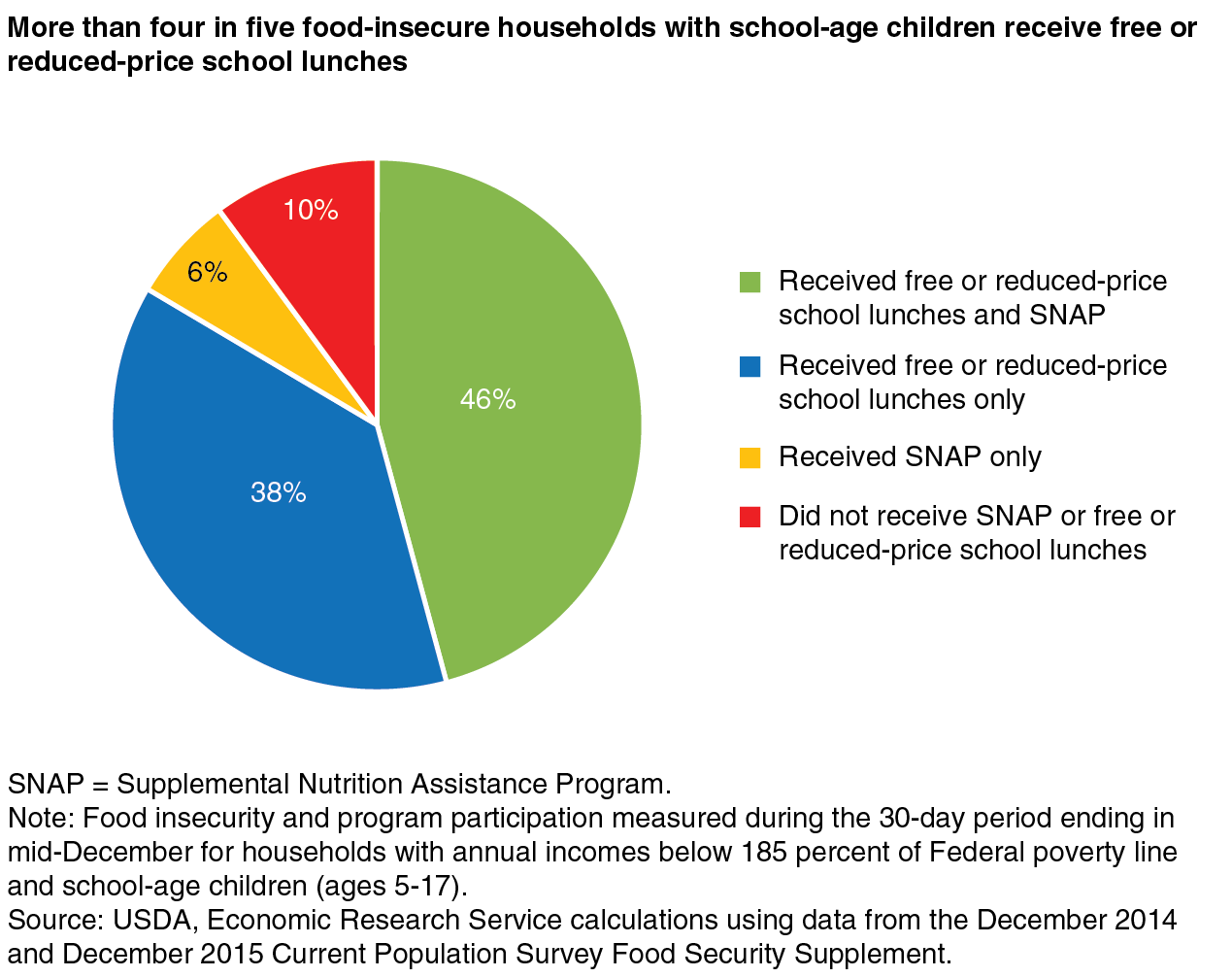USDA’s National School Lunch Program Reduces Food Insecurity
- by Katherine Ralston and Alisha Coleman-Jensen
- 8/7/2017
In 2015, 13.1 million children lived in food-insecure households—households that at times have difficulty putting enough food on the table due to limited resources. Research has found that children in food-insecure households are more likely to experience adverse outcomes related to health, development, and socialization.
The National School Lunch Program (NSLP) and other USDA child nutrition programs provide nutritious foods that help reduce the harmful impact of food insecurity and improve outcomes for children. In 2014 and 2015, 84 percent of low-income food-insecure households with school-age children accessed free or reduced-price lunches through the NSLP, either in combination with USDA's Supplemental Nutrition Assistance Program (SNAP) benefits (46 percent), which provide food and nutrition assistance to low-income Americans, or alone (38 percent). An estimated 6 percent of low-income food-insecure households with school-age children received SNAP benefits, but not free or reduced-price school lunches, and 10 percent did not participate in either program.
These estimates are based on data from the Food Security Supplement to the Current Population Survey from mid-November to mid-December in 2014 and 2015. Two years of data are averaged to obtain adequate sample size for reliable estimates.
Research sponsored by USDA’s Food and Nutrition Service found that children receiving free or reduced-price NSLP lunches consume fewer empty calories and more fiber, milk, fruit, and vegetables than income-eligible nonparticipants, both at lunch and during a full 24 hours. NSLP participants are also more likely than low-income nonparticipants to have adequate average intakes of calcium, Vitamin A, and zinc.
Free and reduced-price school meals also free up some household resources for other necessary purchases. Money that would have been used for school day lunches or breakfasts can be used for other meals. ERS researchers reviewed five recent studies that examined the effectiveness of NSLP in reducing food insecurity. The studies rely on a variety of independent data sources and different approaches to account for what researchers call selection bias—the self-selection of more vulnerable households into the group receiving food assistance.
Some studies examined the effect of participation in the program, while others looked at the availability of school meals, comparing households’ food hardship during the school year to the summer when school meals are not available. All but one study found that the NSLP was associated with significantly lower rates of food insecurity for households with children. For example, researchers at St. Louis University and Virginia Commonwealth University found that food insufficiency increased in summer months for NSLP participant households but not for income-eligible nonparticipants, who had lower and more stable rates of food insufficiency throughout the year.
This article is drawn from:
- Ralston, K., Treen, K., Coleman-Jensen, A. & Guthrie, J. (2017). Children’s Food Security and USDA Child Nutrition Programs. U.S. Department of Agriculture, Economic Research Service. EIB-174.
You may also like:
- Food Security in the U.S.. (n.d.). U.S. Department of Agriculture, Economic Research Service.
- Child Nutrition Programs. (n.d.). U.S. Department of Agriculture, Economic Research Service.
- Coleman-Jensen, A., Rabbitt, M.P., Gregory, C.A. & Singh, A. (2016). Household Food Security in the United States in 2015. U.S. Department of Agriculture, Economic Research Service. ERR-215.


